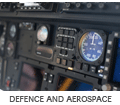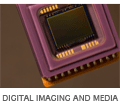The Bluewater System's 9260 Quickstart Kit offers two methods for connecting a high resolution digital camera. The first option is to use the flat flex connector on the Snapper 9260 module itself. This method can be used to easily add the Bluewater Systems 3 Megapixel digital camera board (see https://bluewatersys.com/design/showcase/digitalcameras.php) to the 9260 Quickstart Kit. The digital camera board comes with all necessary software for using the camera, including a library which provides a simple, easy to use library for developing camera based applications. The flat flex connector can also be used for custom designed camera boards. The pin-out includes 4 general purpose IOs (from the Snapper 9260s IO expander), which can be used for connecting to signals such as reset, strobe and trigger on an image sensor. The second method for connecting cameras is to use the camera pins on the 9260 Quickstart Kit header. This allows any digital image sensor to be quickly connected to the Quickstart Kit for prototyping and testing. Up to 12-bit image sensors are supported. Most development kits for image sensors provide a pin strip on the image sensor board, which can be easily wired to the header on the 9260 Quickstart Kit header. Combining a Quickstart Kit, a digital camera board and Bluewater System's PTP-USB library (see https://bluewatersys.com/blog/?p=74) allows for quick prototyping of a handheld digital camera, with USB connectivity to a standard Windows PC for downloading photos.

Keeping up with the newsPosted in Uncategorized on March 06, 2009 by Administrator Embedded computing is a fast-moving field, with products, components, even whole markets coming and going on a monthly basis. The Open Source world is similar - and you often find that the problems you have at the moment are ones that other people are working on right now. Keeping a close eye on the industry gives you advance warning of up-and-coming issues, a window into the minds of your competitors and consumers, and can be a valuable source of ideas for future trends. In addition to the more traditional vendor-driver news channels, there are numerous Internet-based resources providing notification and discussion of events - ranging from aggregations of company press releases to personal ramblings by personalities driving new development. In this entry we will present a sampling of some of the resources found to be of particular and consistent interest. High-level news aggregates http://slashdot.org/ Extremely popular general news aggregation site for geek-related news, the discussion on topics of interest can offer valuable insight into the mind of the common technically-inclined consumer. http://arstechnica.com/ Well-written news site on technology-related events - could be seen as an editorial counter for Slashdot's discussion model. http://news.cnet.com/nanotech/ Cnet News network's blog focusing on news related to computer hardware. Field-specific news sites http://www.linuxdevices.com/ One of the central resources for news related to Linux and embedded devices. Low-traffic source for news releases from the small form factor computing industry. http://www.dev-monkey.com/ Occasional articles on development tools and new evaluation kits. http://www.portablemultimedia.blogspot.com/ Well-written articles focusing on news about portable devices. http://kerneltrap.org/ At one point a definitive news site on Open Source kernel development, this site still provides a easier-to-digest window into the various kernel mailing lists. http://www.embedded-computing.com/ http://cr4.globalspec.com/blog/83/Embedded-Now-Blog Embedded Computing Design magazine's blogs Personal and individual journals Personal blog of Harold Welte, known for his Linux iptables, GPL enforcement and OpenMoko work. Currently active as open source liaison for VIA Technologies. http://pavelmachek.livejournal.com/ Pavel Machek's personal journal, focusing on experiences with open source projects and the G1 Android phone. http://www.bunniestudios.com/blog/ Andrew Huang's personal blog, notable for first-hand discussions on embedded product development and the Name that Ware challenge. The lighter side of engineering http://www.electronicsweekly.com/blogs/engineering-design-problems/ Some pieces of engineering are not quite up to a standard one can be proud of. This site documents pitfalls of engineers, with examples. http://thedailywtf.com/default.aspx Insider anecdotes of how wrong software can go. There are, of course, innumerable other news sites, blogs and journals out there that are of interest in the Embedded Computing domain. Many of them are very subject-focused: dealing only with one particular product, project or the like. If you can recommend additional resources that are of general interest, however, please comment and do so. |



